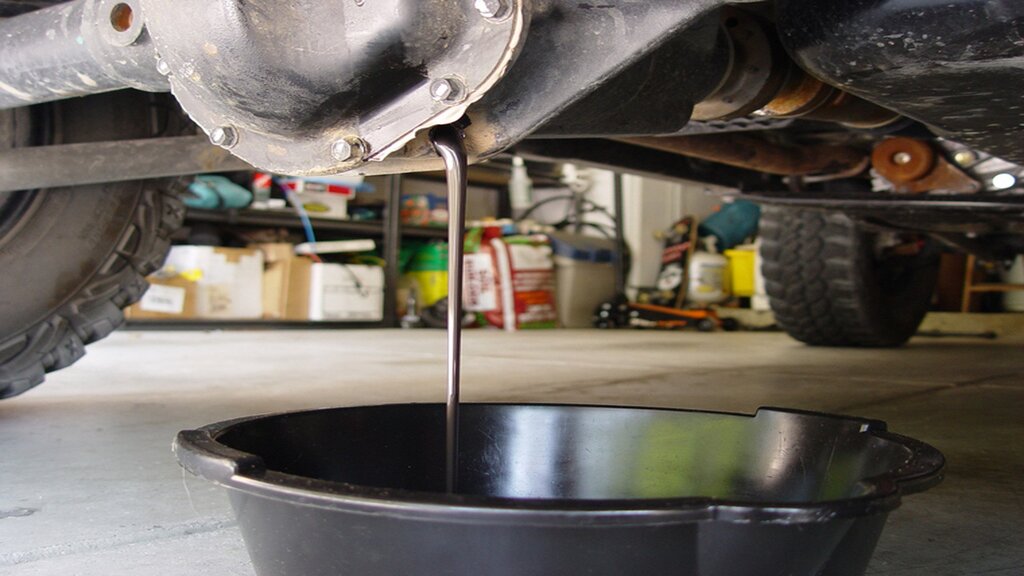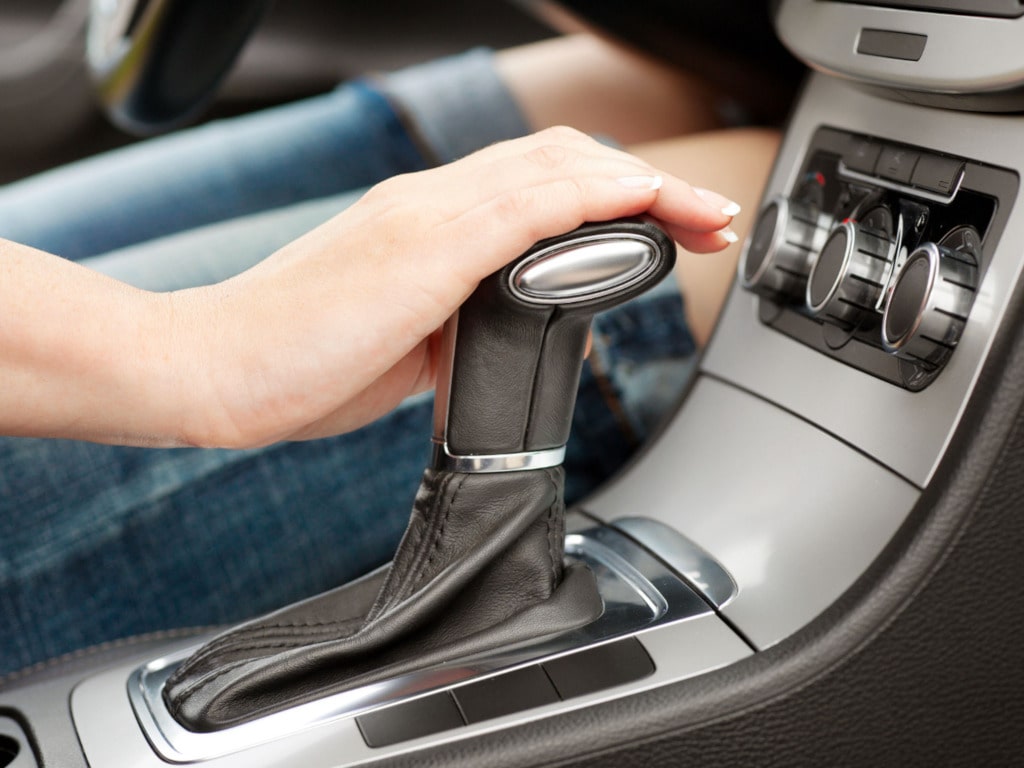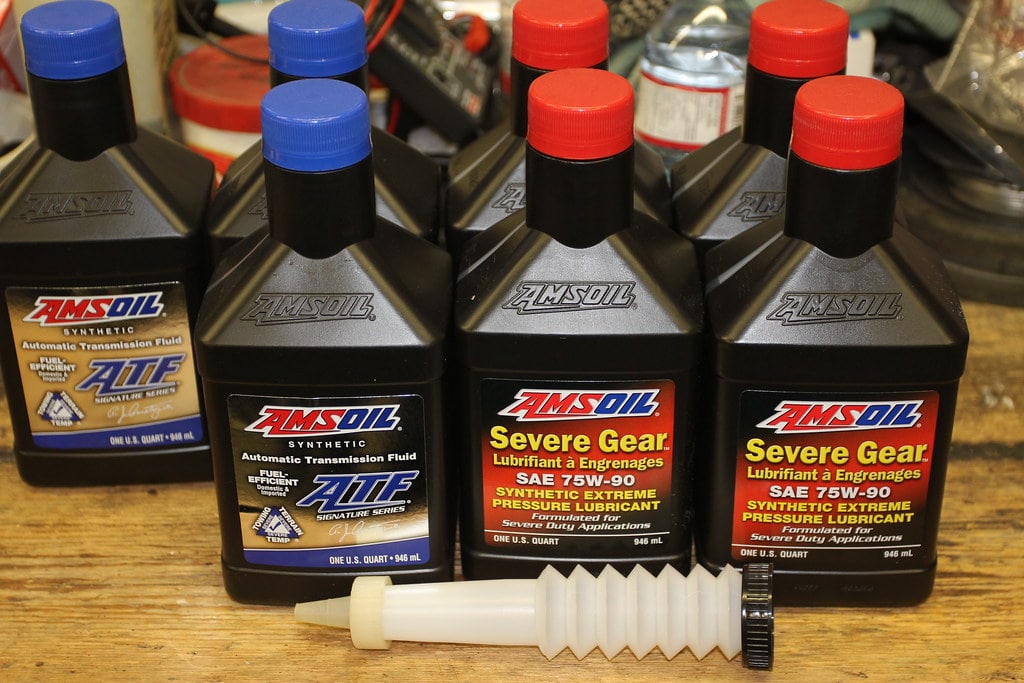What Will Happen If You Never Change Differential Fluid?
Each part of the vehicle has its distinctive function and is all taken care of by an accompanying tool or enhancer to function more effectively through the indispensable effects of time and environment. With that said, one of the most vital things contributing to a smooth-running process and ensuring the long-term optimal health of your vehicle is every kind of fluid or oil. If you don’t pay any attention to these powerful boosters, your car’s performance can go down at any time with fewer signs to prepare ahead. And of course, within your purpose of surfing through this piece of information, in case you never change differential fluid, nothing good will happen after.
In today’s article, Car From Japan will get into more details about differential fluids and the harmful effects behind the habit of leaving this lubricant unconcerned. We will also show you some helpful tips on the oil-changing routine for car components and elements to help you stick with the car much longer than you always think.
What Is Differential Fluid?
Driving toward an unexpected turn is never easy and gives off a convenient feeling. Have you ever gotten through any streets’ curves without having to apply the brakes, adjust the throttle, or let the car rattle in succession. It sounds like an impossible task, but in reality, it is very likely to achieve thanks to your skillful driving ability and the best assistant for both typical and surprise turns, the differential (also known as transaxle or gearbox).
When the car runs on a straight road, the wheels have the same speed, so there is no effect on the balance and stability. But when cornering, the inside wheel has a shorter distance than the outside wheel. So to be able to corner, the speed of the outer wheels has to be greater. The differential will then be in charge of adding and compensating the gap between the inner and outer wheels when the vehicle faces every bend or turn in all directions.
In more detail, because it is part of the engine’s powertrain, it, as the name suggests, will help transmit the balanced power of the vehicle subjected to unusual impacts on every car’s wheel. In short, the differential will control you, and your steering acts for a smoother and stable driving experience.
>> See more: 5 Symptoms Of Unbalanced Tires In Your Car
And as we have mentioned quite a lot above, any car part, with the impact of time, will encounter some problems related to riding smoothness and gradually face a loss of power. The operation of the differential will depend on a substance called differential fluid. Differential fluid, often known as gear oil, lubricates the internals of the differential, such as the ring and pinion, to prevent differential wear and cause severe mechanical problems when operating the vehicle nonstop for a long time.
And do you know why they are often referred to this substance as fluids rather than oils? This is due to its higher homogeneity. It has a thicker texture than oil, clings to the device, and penetrates as deeply as possible.

Typically, there are two types of differential fluids. The first type is mineral base, a natural type of liquid derived from crude oil. The second one is a synthetic differential fluid manufactured in a laboratory. Synthetic differential fluids, like other synthetic oils, can be fine-tuned for the best performance for each engine type and condition.
Overall, automotive differential fluids will have the following highlighted functions, which are reducing friction, saving fuel, reducing wear speed, and maintaining viscosity to prolong your gear’s service life. It can optimize the power of the gearbox for smooth gearshift operation and smooth operation. Some quality kinds also protect the differential in particular and the whole vehicle from severe oxidation and rust, keep the temperature in the gearbox lower than usual and avoid the engine burning situation when operating continuously in hot and high-pressure conditions.
What Will Happen If You Never Change Differential Fluid
With these promising-to-a-great-drive functions in mind, differential fluid is a vital substance for any vehicle. It will ensure the gears or differentials operate smoothly and efficiently in a comprehensive system like a car engine.
Over time, the differential fluid will inevitably need to be replaced, and if that doesn’t happen, the gears can wear out quicker due to friction and cause a host of problems within the engine. And that’s something you never want to happen, at any time, especially when you are enjoying your long-time-no-see freedom and comfort after days of hard work.
Below are some of the effects of not changing the differential fluid when necessary. These signs are not too severe at the beginning of the repairing process. You may completely ignore and forget them at some point, maybe right after reading this. However, what your car will suffer in the long run may be irreparable. So beware!
Differential or transmission gives off groaning noise
The most common sign that urges you to change the differential oil right away is when you notice a whining noise coming from the rear differential. Not only a groaning or whining noise, but any noise coming from the differential or transmission is an indication that the fluid needs to be changed.
If the gear oil gets lower than the optimal level or becomes too dirty, it can cause the gears to whine or howl as they rotate. These noises will increase along with the speed of the vehicle. Never ignore this sign because it can cause a lot of later severe damage, and no one can ever fix it again.
Moreover, the differential may not make any noise even when the fluid is in low status. When you hear any noise, there isn’t any lubricant left inside or the oil is too dirty. If this happens, you should check the differential or the transmission as soon as possible to prevent the unwelcomed possibility of a broken or damaged engine.
Jerking transmission, most noticeable when cornering
While transmission jerking can be caused by some of the deeper and more complex issues, it can also be a potential sign of a low differential fluid level. If you feel the car jerk or vibrate hard when driving on the road, there is probably something wrong with the differential. When the differential fluid is too dirty or its level is too low, you may notice the gears or transmission jerking plus lots of annoying noises. If changing the differential fluid doesn’t solve the problems, it’s a good idea to thoroughly inspect the entire vehicle at once to avoid missing any hidden issues.

The burnt smell from transmission or differential
A burning smell from your differential or transmission is another sign you should consider carefully if the differential fluid change has not yet entered your auto maintenance dictionary. In addition, the smell can come from oil leaking from an old gasket, represented by a red stain under your parking spot. Burning odors can also be the result of a gearbox overheating due to poor lubrication. The fluid that is too old can not lubricate moving parts properly, causing metal components to ignite the oil from high temperatures. Changing the differential oil can partly solve the problem. Otherwise, replace the gasket or seal immediately.
When first put the car in gear, it is hard to operate it.
If the car does not operate normally, it may be because the differential is damaged or the differential fluid is short when you first shift into gear and step on the accelerator. This will cause a misalignment between the ring gear and the pineapple gear. The bearings are overstressed, making it harder for the ring gear to rotate. And eventually, the car will not function well right from the start.
Badly worn-out differential
If you do not change the differential oil for a long time, it can cause the vehicle’s differential to wear out. And when they get too old, you won’t be able to ride your car. Even if you do something, there will always be a loud noise coming off, annoying as a morning alarm. And until some point, the car can not even move any longer.
How Often To Change Differential Fluid
The frequency of changing differential fluid will depend on the car brand and notices of the original manufacturer. Commonly, the manufacturer’s given user manual will have the instructions on this issue. But if you don’t find it anywhere, it’s best to contact the manufacturer via their hotline in no time without trying hard to guess something you have to do next.
The most appropriate time for a gear oil change is after the car runs for about 20,000 miles to 50,000 miles, depending on the current car status and the industrial advice. However, the real-time change can be varied as each driver will operate the car differently and take care of it with their specific routine.
If you own a car and expect it to be healthy most of the time, don’t just wait until it reaches the recommended number of 40,000 miles or 50,000 miles to change the differential fluid, or else that can be too late for a problem. They are all just theoretical numbers. The driver who cares for the car’s durability and smooth handling through every turn will check it regularly and have the fluid inspected or changed, even when the car has only traveled about 20,000 miles. However, a few exceptional cases, such as specified-made off-road vehicles or ones usually used for towing, can have the fluids reviewed and serviced at a lower mileage level.
Vehicle owners should regularly observe and check the oil condition with a dipstick. Sticks turning dark brown, or black or making strange noises are signs that the car’s rear differential oil needs to be changed. This act is highly encouraged because the longer the gearbox is left un-check-up, the more likely every related part will function wrong. And these disorders can lead to many glitching engine outcomes that are difficult to control later on.
Breaking Out The Differential Fluid Change Cost
Like it or not, it’s time to dive into the bitter truth for your wallet for this upcoming project. How much will the differential fluid change cost you? After all, a blind unawareness and recklessly continuing to drive the car with its old fluid are never a good thing. Riding on the road with burnt or badly lack of differential fluid will forever and ever do your car engine and your car as a whole, more harm than good. The fluid, ironically, can wear down the differential due to overheating or abrasion of colliding metal parts.
Within the fluid is not being checked and changed for a long time, the entire differential can fail. So it is a reason that twisted what could have been an uncomplicated fluid-changing into a more pricey project. Remember to visit your trusted mechanic after detecting maybe just one of the above symptoms and timely change the differential oil.
The renewal of this kind of fluid is pretty cheap. It varies between vehicles, and the due mileage will differ too. Typically, a healthy differential will require 1 to 4 liters of fluid. Besides, vehicles equipped with all-wheel drive features will have one differential in the front and one at the back. In this case, the amount of fluid you need to fill the car will be double the standard.
With a good hand of an expert, the process can be done easily in just one hour. The differential fluid change cost will fall from around $90 to $150, including a can of fluid charged at $40 to $70, and the labor costs of $50 to $80. Depending on the fluid brand and the experience of the mechanic handling your service, the total bill can fluctuate within $10 and $20 more.

Even though the two have the same engine structure with the same gearbox, this may be suitable for that type of differential fluid, but not another. So when you buy a car gear oil by yourself, it is best to tell the seller detailed information about your vehicles, such as brand, model, version, and model year, for better advice to choose the most compatible fluid type.
How To Execute The Differential Fluid Change and Check Yourself
After breaking the cost of changing the differential fluid, Car From Japan will show you the quick way to check and replace differential fluid at home without wasting too much money and traveling effort. If you want to do this check-up or replacement, you should carefully read the instructions from reputable sources and watch the tutoring videos for a safe and effective process. If not, indeed, you must be very confident in your mechanical and automotive knowledge. Then good luck!
Before starting to work, you need to prepare a few tools and supplies:
– Differential oil
– One set of jacks with 4 jack stands.
– A basin containing old fluid discharged from the car
– Lots of newspaper or cardboard to line the yard.
– One suction pipe and oil pump (Oil Suction Gun).
– Sockets
– Some old rags to clean.
The main task is quite simple, as you will see below. If you are not familiar with the tools and procedures to deal with any car part in general, please spend a generous amount of time of about 2 hours to do it carefully and learn from experience at the same time
Step 1: First, run the car for about 20 minutes on the road to warm up the engine, then find a flat parking spot.
Step 2: Jack the car up high using 4 jack stands to prop the car at that flat raised position.
Step 3: Get under the car, slide to the back and look up, you will see the horizontal wheel axle, and in the middle is a large box, shaping like a pumpkin. Here is where getting things works: The differential.
Double-check if the cover of the box is still smooth. If there are scratches, they may be caused by collisions with obstacles on the road. Driving on paved roads is usually not a problem. But when the car is rolling in the so-called Off-Road Conditions, such as on rocky areas, trails, forest crossings, and wading streams, it has to encounter tons of convex and concave obstacles protruding from the ground. When driving in such conditions, you should take the utmost care with the handle to avoid damaging the differential.
Step 4: Spread a lot of newspaper or cardboard on the ground below the differential to catch the stray oil drops messy splashing while being drained out.
Step 5: Find the location of the drain hole and the fill hole on the differential. Place the waste fluid container on top of the newspaper, just below the oil drain hole. Put the old fluid pan in place, just below the differential.
Step 6: Starting the fluid draining process, you should open the refueling screw first. Because there are many car owners, although they are novices but in very high spirits, eager to open the exhaust nail immediately to remove all the old fluid. However, in some cases, the screw has rusted and stuck too hard on the differential. After all, your car will lay precariously in the middle of nowhere until a skilled mechanic with tools comes to the rescue. Otherwise, you have to lower the car, then call someone to take it to the repair shop.
Both cases cause additional costs and lots of wasted efforts. Therefore, before draining the oil, you should test the oiling screw to see if it can be opened or not. If not, take the car to the store from the first minute to avoid any followed trouble.
Step 8: Open the drain plug (drain plug). Place the basin below the differential. Be careful because the fluid may still be hot. As mentioned above, the drain screw is a magnet. Observe the iron dust around it to get the status of the differential. If there is nothing to worry about, clean the drain screw and wait until all the old fluid drains out.
Step 9: Insert the screw back into the drain plug, and tighten it with the appropriate hose wrench.
Step 10: Refuel. With the oil suction gun for less than $10, you can draw fluid from the cans. Then use the nozzle to transfer it into the differential. This approach is much easier to do than using a funnel. So how much oil is enough? The differential needs an amount of fluid just up to the mouth of the fill hole.
Step 11: Tighten the screw covered the fill hole, and lower the car.

After checking whether the differential leaks or not, you can rest assured in the next few tens of thousands of miles. And even without words, the car will thank you very much for your care.
FAQs On The Issue of Never Change Differential Fluid
Below are some of the most common-meet questions for people encountering the differential fluid problem. Check them out to see if there is anything you want to get clearer and let us know in the comment section below.
1. How long can you be on the road with no differential fluid change?
The maximum distance you can be on the road, in theory, is 50,000 miles, even not changing the differential fluid. Generally, if, after checking the level and condition of the oil on the necessary parts and the gears located on the hub connecting the two wheels, you don’t see any problems or malfunctions, you can drive the car to go about more than 10,000 or maybe up to 20,000 miles.
It doesn’t matter how many miles you’ve traveled or what kind of car care you’ve applied, you should never leave your car maintaining-isolated for too long. Pay close attention to every strange driving sign, bizarre sound, or sensation while driving every day. And remember to check the odometer regularly and conduct a thorough vehicle inspection after every 30,000 miles of riding. Avoid the situation your car has to meet its limits of strength and health to serve you without mindful care.
2. Is it required to change the rear differential fluid?
Yes, replacing the rear differential fluid can be considered a required maintenance procedure. Rear differential fluid lubricates and protects the gears that turn your vehicle’s rear wheels. This fluid can get filthy and congested over time, resulting in diminished differential performance and dependability. Moreover, it also helps the whole inner place avoid internal component wear and tear throughout the time.
3. Do differential fluid changes emit any odor?
Although this is not always the case, differential fluid change can smell like not-in-good-condition eggs occasionally. The give-off smell variation depends on several things, such as the altered fluid, the intensity of the changing project, and the sense of the system.
In some circumstances, there may merely be a not-so-strong scent that is very hard to detect by others. It is best to consult a mechanical expert if you are worried about the smell of your differential fluid shift.
4. What happens when your differential fluid is under a low level?
If your differential fluid level is low, grinding or humming noise may be the problems rooting from the differential. At the same time, the gears inside the differential will be forced to rotate at a higher speed. This eventually will cause some annoying machinery noise.
You are optional to change or add more differential fluid to your vehicle if the oil level is too low or in an alarming condition checked through colors. If problems or noises persist even after adding oil, consider replacing the whole differential immediately.
Summing Up On The Differential Fluid Change
Many people may still think that it is natural for any car to perform powerfully on all roads or smoothly on every bend and turn. Inexperienced drivers can easily assume that this is a car they have just bought for a while, so it is supposed to operate super well, glide without colliding and always provide the most comfortable feeling when on duty. And if it does happen to fail at some point in its life cycle, some people may get angry and upset right away while blaming their car. But not everyone knows that an ironic cause that leads to those drivers’ unwelcomed surge of emotions is themselves. And the one to blame is the one and only – the neglect.
The habit of never change differential fluid needs to be eliminated if you want to enjoy the most natural smoothness of car riding on the road. Don’t let such a small part affect your daily driving experience. Just a simple act of checking, replacing, or adding fluids that takes no time or effort will help you and your car a lot in the long run.
For more car maintenance tips, follow Car From Japan today.














